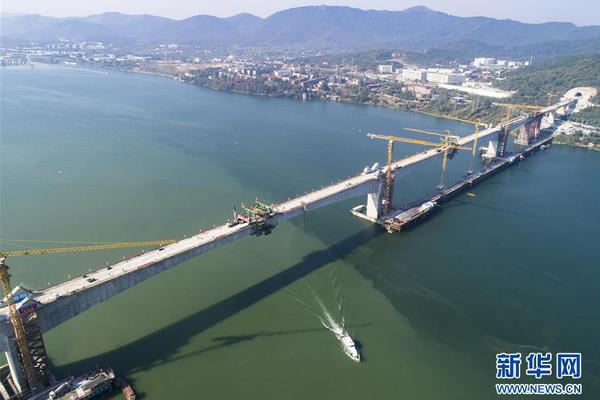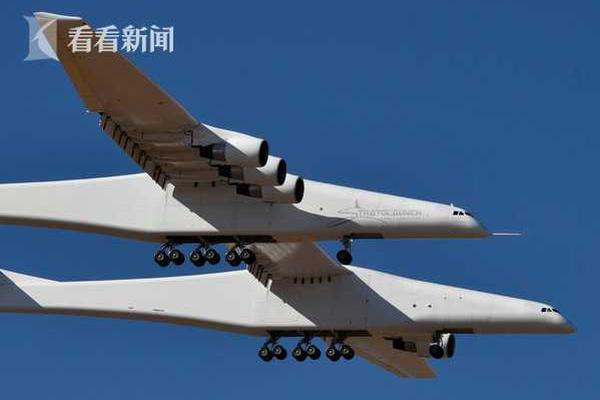
1. The knowledge points of the high school general technical examination are as follows: environmental adaptability: the system must be able to adapt to changes in the external environment.
2. High school general technology (abbreviated as GT) refers to a relatively broad technology other than information technology, which reflects basicity and universality and is different from professional technology. It is a technology that is widely used in daily life and has a wide range of migration value for the development of the majority of students.
3. General technology test knowledge points: (1) Understand the unique value of structure to the realization of technical products and their functions from the perspective of mechanics, understand the general classification and simple force analysis of structures, and appreciate classic structural cases from the perspective of technology and culture.
4. Review important knowledge points of the general technology examination. Examination requirements. Examination requirements. The requirements for the general technical examination for the mastery of the content of the examination are divided into three levels, which are called from low to high: understanding, understanding and application. It is represented by the letters a, b and c respectively.

1. The main principles of system analysis: whole The physical principle needs to be analyzed before analyzing each part; the scientific principle is to use scientific methods and mathematical tools for quantitative calculation as much as possible; the comprehensive principle is to comprehensively analyze and consider comprehensively, and cannot be generalized, because the small lose the big.
2. Introduction to the system expansion of general technology: the main principles of system analysis (1) The principle of integrity: system analysis should first focus on the whole system, first analyze the whole, and then analyze the part; look at the whole situation first, then look at the part; look at the whole process first, and then look at a certain stage; look at the long-term first, and then look at the current .
3. The principle of careful observation: When conducting system failure analysis, the operation of relevant software and hardware must be carefully observed. The principle of thinking first and then doing: Before troubleshooting, list the possible faults and check them one by one. The principle of soft first and then hard: check the software failure first, and then troubleshoot the hardware conflict.
4. The principle of integrity. A basic idea of systematic analysis is to regard the object to be studied as an organic whole, and take the overall benefit as the daily standard.
5. Feasibility principle: The feasibility principle refers to the need to consider actual constraints in the process of systematic analysis, such as time, cost, technical feasibility, etc. In the analysis, it is necessary to take into account the actual situation and theoretical requirements to find the best balance.
1. Feasibility principle: Feasibility principle refers to the need to consider actual constraints in the process of systematic analysis, such as time, cost, technical feasibility, etc. In the analysis, it is necessary to take into account the actual situation and theoretical requirements to find the best balance.
2. The principle of integrity: systematic analysis first focuses on the whole system, first analyze the whole, and then analyze the part; look at the whole situation first, then look at the part; look at the whole process first, and then look at a certain stage;Look at the long-term first, and then look at the present.
3. The principle of integrity. A basic idea of systematic analysis is to regard the object to be studied as an organic whole, and take the overall benefit as the daily standard.
1. The general principle of logistics management - logistics rationalization There are many specific principles of logistics management, but the most fundamental guiding principle is to ensure the realization of logistics rationalization. The so-called logistics rationalization is the process of adjusting and improving the logistics equipment configuration and logistics activity organization to realize the overall optimization of the logistics system.
2. Logistics system designThe basic principle is to seek the quantification of logistics, the balance of time and cost, the direct delivery of goods, and the effort-saving of handling, loading and unloading from the two aspects of logistics demand and supply.
3. The four principles that should be followed in the process of systematic analysis are: ___, ___, ___ and the principle of combining qualitative analysis and quantitative analysis. The basic principles of prediction are: probability principle, ___ principle, ___ principle, ___ principle and principle.
4. In general, adhere to the principle of logistics rationalization, that is, adjust and improve the components of the logistics system under the premise of taking into account cost and service, and realize the overall optimization of the logistics system. ( 2) On the macro level, in addition to improving the construction of supporting elements, the planning and guidance of the government and relevant professional organizations are also needed.
5. Data drives the optimization process of the logistics system.If the data is inaccurate, or the relevant data cannot be entered into the system optimization model in time, the resulting logistics scheme is questionable. For the logistics optimization process that must produce operable logistics schemes, the data must also be comprehensive and sufficient.
6. Economy is one of the important principles of logistics system construction, which is specifically manifested as the total cost of logistics, which requires economic analysis of various schemes, including investment, recovery period, depreciation, benefit comparison, etc. It is necessary not only to meet the requirements of production to serve production, but also to save investment as much as possible.
Systematic thinking principle: The principle of systematic thinking is to understand and divide through overall consideration of the problem rather than partial consideration The method of analyzing the system.It emphasizes the inherent complexity and interaction of the system, and requires the problem to be viewed as a whole rather than local optimization.
The basic principles of system analysis and design are the principle of uniformity. In accordance with the regulations and policies of the State Administration of Taxation on export tax refunds, taking into account the specificities of local business processing, a unified export tax refund business norms are formulated. The principle of applicability.
The principle of integrity. A basic idea of systematic analysis is to regard the object to be studied as an organic whole, and take the overall benefit as the daily standard.
The principle of integrity: System analysis first focuses on the whole system, first analyze the whole, and then analyze the part; look at the whole situation first, then look at the part; look at the whole process first, and then look at a certain stage; look at the long-term first, and then look at the present.
HS code electrical machinery data-APP, download it now, new users will receive a novice gift pack.
1. The knowledge points of the high school general technical examination are as follows: environmental adaptability: the system must be able to adapt to changes in the external environment.
2. High school general technology (abbreviated as GT) refers to a relatively broad technology other than information technology, which reflects basicity and universality and is different from professional technology. It is a technology that is widely used in daily life and has a wide range of migration value for the development of the majority of students.
3. General technology test knowledge points: (1) Understand the unique value of structure to the realization of technical products and their functions from the perspective of mechanics, understand the general classification and simple force analysis of structures, and appreciate classic structural cases from the perspective of technology and culture.
4. Review important knowledge points of the general technology examination. Examination requirements. Examination requirements. The requirements for the general technical examination for the mastery of the content of the examination are divided into three levels, which are called from low to high: understanding, understanding and application. It is represented by the letters a, b and c respectively.

1. The main principles of system analysis: whole The physical principle needs to be analyzed before analyzing each part; the scientific principle is to use scientific methods and mathematical tools for quantitative calculation as much as possible; the comprehensive principle is to comprehensively analyze and consider comprehensively, and cannot be generalized, because the small lose the big.
2. Introduction to the system expansion of general technology: the main principles of system analysis (1) The principle of integrity: system analysis should first focus on the whole system, first analyze the whole, and then analyze the part; look at the whole situation first, then look at the part; look at the whole process first, and then look at a certain stage; look at the long-term first, and then look at the current .
3. The principle of careful observation: When conducting system failure analysis, the operation of relevant software and hardware must be carefully observed. The principle of thinking first and then doing: Before troubleshooting, list the possible faults and check them one by one. The principle of soft first and then hard: check the software failure first, and then troubleshoot the hardware conflict.
4. The principle of integrity. A basic idea of systematic analysis is to regard the object to be studied as an organic whole, and take the overall benefit as the daily standard.
5. Feasibility principle: The feasibility principle refers to the need to consider actual constraints in the process of systematic analysis, such as time, cost, technical feasibility, etc. In the analysis, it is necessary to take into account the actual situation and theoretical requirements to find the best balance.
1. Feasibility principle: Feasibility principle refers to the need to consider actual constraints in the process of systematic analysis, such as time, cost, technical feasibility, etc. In the analysis, it is necessary to take into account the actual situation and theoretical requirements to find the best balance.
2. The principle of integrity: systematic analysis first focuses on the whole system, first analyze the whole, and then analyze the part; look at the whole situation first, then look at the part; look at the whole process first, and then look at a certain stage;Look at the long-term first, and then look at the present.
3. The principle of integrity. A basic idea of systematic analysis is to regard the object to be studied as an organic whole, and take the overall benefit as the daily standard.
1. The general principle of logistics management - logistics rationalization There are many specific principles of logistics management, but the most fundamental guiding principle is to ensure the realization of logistics rationalization. The so-called logistics rationalization is the process of adjusting and improving the logistics equipment configuration and logistics activity organization to realize the overall optimization of the logistics system.
2. Logistics system designThe basic principle is to seek the quantification of logistics, the balance of time and cost, the direct delivery of goods, and the effort-saving of handling, loading and unloading from the two aspects of logistics demand and supply.
3. The four principles that should be followed in the process of systematic analysis are: ___, ___, ___ and the principle of combining qualitative analysis and quantitative analysis. The basic principles of prediction are: probability principle, ___ principle, ___ principle, ___ principle and principle.
4. In general, adhere to the principle of logistics rationalization, that is, adjust and improve the components of the logistics system under the premise of taking into account cost and service, and realize the overall optimization of the logistics system. ( 2) On the macro level, in addition to improving the construction of supporting elements, the planning and guidance of the government and relevant professional organizations are also needed.
5. Data drives the optimization process of the logistics system.If the data is inaccurate, or the relevant data cannot be entered into the system optimization model in time, the resulting logistics scheme is questionable. For the logistics optimization process that must produce operable logistics schemes, the data must also be comprehensive and sufficient.
6. Economy is one of the important principles of logistics system construction, which is specifically manifested as the total cost of logistics, which requires economic analysis of various schemes, including investment, recovery period, depreciation, benefit comparison, etc. It is necessary not only to meet the requirements of production to serve production, but also to save investment as much as possible.
Systematic thinking principle: The principle of systematic thinking is to understand and divide through overall consideration of the problem rather than partial consideration The method of analyzing the system.It emphasizes the inherent complexity and interaction of the system, and requires the problem to be viewed as a whole rather than local optimization.
The basic principles of system analysis and design are the principle of uniformity. In accordance with the regulations and policies of the State Administration of Taxation on export tax refunds, taking into account the specificities of local business processing, a unified export tax refund business norms are formulated. The principle of applicability.
The principle of integrity. A basic idea of systematic analysis is to regard the object to be studied as an organic whole, and take the overall benefit as the daily standard.
The principle of integrity: System analysis first focuses on the whole system, first analyze the whole, and then analyze the part; look at the whole situation first, then look at the part; look at the whole process first, and then look at a certain stage; look at the long-term first, and then look at the present.
CIS countries HS code usage patterns
author: 2024-12-24 01:07Best global trade intelligence tools
author: 2024-12-24 00:45Country block exemptions by HS code
author: 2024-12-23 23:55Raw leather HS code references
author: 2024-12-23 23:53Trade data-driven portfolio management
author: 2024-12-23 22:59Export planning using HS code data
author: 2024-12-24 01:00International trade compliance dictionary
author: 2024-12-24 00:52Supplier relationship management with trade data
author: 2024-12-24 00:49How to secure international sourcing
author: 2024-12-23 23:04How to align trade strategy with data
author: 2024-12-23 22:42 Ceramics imports HS code mapping
Ceramics imports HS code mapping
485.16MB
Check Dairy powder HS code references
Dairy powder HS code references
851.91MB
Check Trade data for strategic pricing
Trade data for strategic pricing
747.97MB
Check USA customs data analysis services
USA customs data analysis services
291.58MB
Check Global trade compliance certifications
Global trade compliance certifications
966.37MB
Check Timber and wood products HS code trends
Timber and wood products HS code trends
683.84MB
Check Value-added exports by HS code
Value-added exports by HS code
192.78MB
Check Pharmaceuticals (HS code ) export data
Pharmaceuticals (HS code ) export data
348.11MB
Check How to evaluate free trade agreements
How to evaluate free trade agreements
284.65MB
Check Top trade data APIs for developers
Top trade data APIs for developers
657.57MB
Check Furniture trade (HS code ) insights
Furniture trade (HS code ) insights
922.79MB
Check Global trade risk heatmaps
Global trade risk heatmaps
461.17MB
Check HS code-based customs broker selection
HS code-based customs broker selection
215.48MB
Check Container freight index monitoring
Container freight index monitoring
416.37MB
Check Global supplier scorecard templates
Global supplier scorecard templates
576.46MB
Check import data visualization
import data visualization
735.92MB
Check Organic cotton HS code verification
Organic cotton HS code verification
547.65MB
Check Top global trade data insights
Top global trade data insights
561.92MB
Check Maritime logistics HS code mapping
Maritime logistics HS code mapping
463.64MB
Check Real-time import export alerts
Real-time import export alerts
728.79MB
Check Predictive trade route realignment
Predictive trade route realignment
596.13MB
Check HS code-driven market penetration analysis
HS code-driven market penetration analysis
223.28MB
Check Sustainable sourcing via HS code tracking
Sustainable sourcing via HS code tracking
526.58MB
Check Real-time freight cost analysis
Real-time freight cost analysis
919.85MB
Check HS code compliance for Nordic countries
HS code compliance for Nordic countries
585.38MB
Check Biodegradable materials HS code verification
Biodegradable materials HS code verification
126.61MB
Check Dynamic import export data modeling
Dynamic import export data modeling
366.59MB
Check Africa import data trends
Africa import data trends
399.96MB
Check Global trade compliance playbooks
Global trade compliance playbooks
624.72MB
Check HS code consulting for exporters
HS code consulting for exporters
349.84MB
Check HS code monitoring tools for exporters
HS code monitoring tools for exporters
728.69MB
Check Real-time cargo insurance insights
Real-time cargo insurance insights
139.18MB
Check Trade intelligence for luxury goods
Trade intelligence for luxury goods
683.13MB
Check Data-driven trade procurement cycles
Data-driven trade procurement cycles
362.28MB
Check Trade data integration with BI tools
Trade data integration with BI tools
731.33MB
Check How to measure supplier performance
How to measure supplier performance
874.95MB
Check
Scan to install
HS code electrical machinery data to discover more
Netizen comments More
1600 Industrial gases HS code verification
2024-12-24 00:35 recommend
310 Global trade customs valuation analysis
2024-12-24 00:34 recommend
169 Dynamic duty drawback calculations
2024-12-23 23:11 recommend
2341 How to integrate trade data into workflows
2024-12-23 22:56 recommend
1855 How to use analytics for HS classification
2024-12-23 22:50 recommend